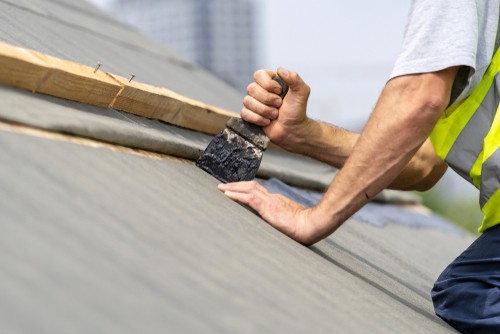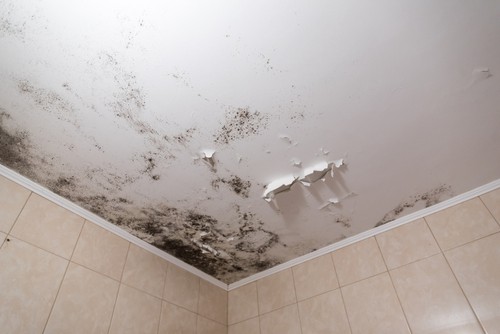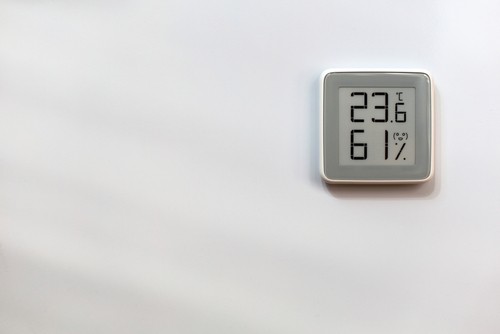
Longest Lasting Roof in Singapore
September 19, 2022
How Long Does Waterproofing Membrane Last?
October 25, 2022Surprising Reasons Mold Might Be Appearing On Your Ceiling

Surprising Reasons Mold Might Be Appearing On Your Ceiling. If you’ve noticed mold on your ceiling, you probably have many questions about what caused it to appear and what you should do about it. Could it be due to waterproofing? Can it cause roof leaks? Mold can be dangerous if it’s allowed to grow in large amounts. It can lead to respiratory problems and other health issues.
It’s important to take care of the problem quickly, though you may be unsure how to get started. This guide will show you why mold may have appeared on your ceiling, and prevent mold in the future. Read on – Surprising Reasons Mold Might Be Appearing On Your Ceiling:
Reasons Mold Might Be Appearing On Your Ceiling

1. Poor Ventilation and Humidity
The first thing to look at is whether the area in which mold on your ceiling has appeared has adequate ventilation. If not, you may have a humidity problem on your hands.
Areas that have poor ventilation often have a higher level of humidity, which can lead to mold growth. To reduce moisture and lower the level of humidity in the room, improve ventilation by opening windows or using a whole-house fan. This will move air throughout the entire house throughout it (rather than just one room).
If these solutions don’t result in a significant drop in the humidity level, you should try using a dehumidifier. Dehumidifiers work by removing moisture from the air to lower the humidity level. You’ll need to empty the dehumidifier bucket at least once per day and run it continuously until you see that the area has become dry. This can take anywhere from one day to several weeks, depending on how long you were dealing with high humidity.
If these solutions still don’t work, you’ll need to decide if the mold is a serious problem. If it’s not a severe problem, keep in mind that mold can and does appear on ceilings all over the world, so there are likely other reasons for your ceiling mold.
2. Leaking Pipes
If there was one specific area of your ceiling that became covered in mold, the issue may be that a pipe is leaking. If moisture is getting into the wall, it could saturate the ceiling and cause mold growth. Check your pipes for leaks to ensure that water isn’t coming into contact with any of them.
If you do leak, consider fixing it sooner, rather than later; otherwise, you’ll end up having to deal with even more damage. If you’re not sure how to fix a leak, contact a professional plumber to be safe.
3. Leaks in Roof
Perhaps you have leaks in your roof, which may be allowing rainwater to seep into the ceiling. If this is the case, you may want to consider having your roof repaired.
You may also want to look at installing an overhang so that rainwater doesn’t seep into the attic. If this happens, you won’t be able to use the area directly above a leaky roof. However, you must get this initial job done before repairs are too far down the road.
4. Flooding
You may also notice mold on your ceiling if you’re experiencing flooding or if you have standing water in your ceiling. If this is the case, this could be an indication of a problem with plumbing or sewer pipes.
If this is the case, you may need to contact a professional plumber to repair or fix the associated issue.
5. Damp Basements
If you have damp basements, you may also experience mold growth in your ceiling. Basements are usually wet due to leaking walls or because they’re usually located underneath a leaky roof. However, they could also become moist due to the lack of ventilation in the room that contains the basement.
If this is the case and you’re experiencing problems with mold on your ceiling, your best bet is to inspect the basement area, perhaps with the assistance of a professional.
6. Water at the Foundation
This can lead to mold on the ceiling. Water at the foundation can also lead to other problems as well, such as leaking pipes or plumbing issues. If your ceiling has a puddle of water on it, you should determine whether this is happening because of a leak.
If you do leak, however, you may be able to prevent future problems by repairing them promptly. This means that, if this is your first time experiencing this problem, you should figure out how to fix the leak right away.
Mold Prevention Tips

Keep Humidity Levels Low.
Improving ventilation and lowering the humidity in the area will prevent mold from appearing. If you’re going to do this, however, use caution so that you don’t create a new problem on top of the one you’re trying to fix. It’s also important to note that humidity is different from a leaky roof; if you don’t see any water on your ceiling or walls, your mold likely appeared due to high humidity.
Be Sure Your Home Has Enough Ventilation.
If you’re having problems with your ventilation and humidity levels, you’ll need to determine whether there’s a leak in your system or if the problem is due to an issue such as mold. If you’re concerned about mold, be sure to check for leaks in your ventilation system and repair them if necessary. When it comes to humidity levels, make sure that you have enough ventilation so that the room no longer has a high level of humidity.
Use Mold-Killing Products to Clean Bathrooms.
If your bathroom has mold, it might be due to a crack in the tub or a leak. If this is the case, you can try using mold-killing products to clean the area and remove any traces of mold. However, if you don’t know what type of products to choose, contact a professional who will be able to help you with the job. Good ventilation and moisture levels in bathrooms are extremely important because they help prevent mold growth.
Reduce Moisture in Your Basement.
If your basement is wet, you can prevent mold growth by improving ventilation in the area and installing a dehumidifier. Make sure that there aren’t any leaks in your system; it may also help to have a plumber check the area and ensure that there are no issues with your pipes.
Check Your Roof for Leaks.
If you notice water on your ceiling, be sure to check the roof. If the problem is due to a leak, repair it immediately. Checking for leaks regularly will also help you prevent future leaks, which means that you won’t have to worry about your ceiling getting damaged again.
Be Sure Your Roof Isn’t Leaking.
If your ceiling has mold on it, your roof may be leaking, which will cause the ceiling to become damp and potentially affected by mold growth. Get in touch with a professional roofer and check the roofing system to determine whether there are any leaks. If so, you’ll want to repair them. While there are more than a few reasons for a ceiling to get moldy, it’s best to keep in mind that these are the most common.
Surprising Reasons Mold Might Be Appearing On Your Ceiling – Conclusion

If you need help getting rid of mold on your ceiling, try one of the services offered by us. With our help, you’ll be able to rely on experienced professionals to help with your mold remediation needs. We hope you enjoyed and benefited from the article – Surprising Reasons Mold Might Be Appearing On Your Ceiling!

